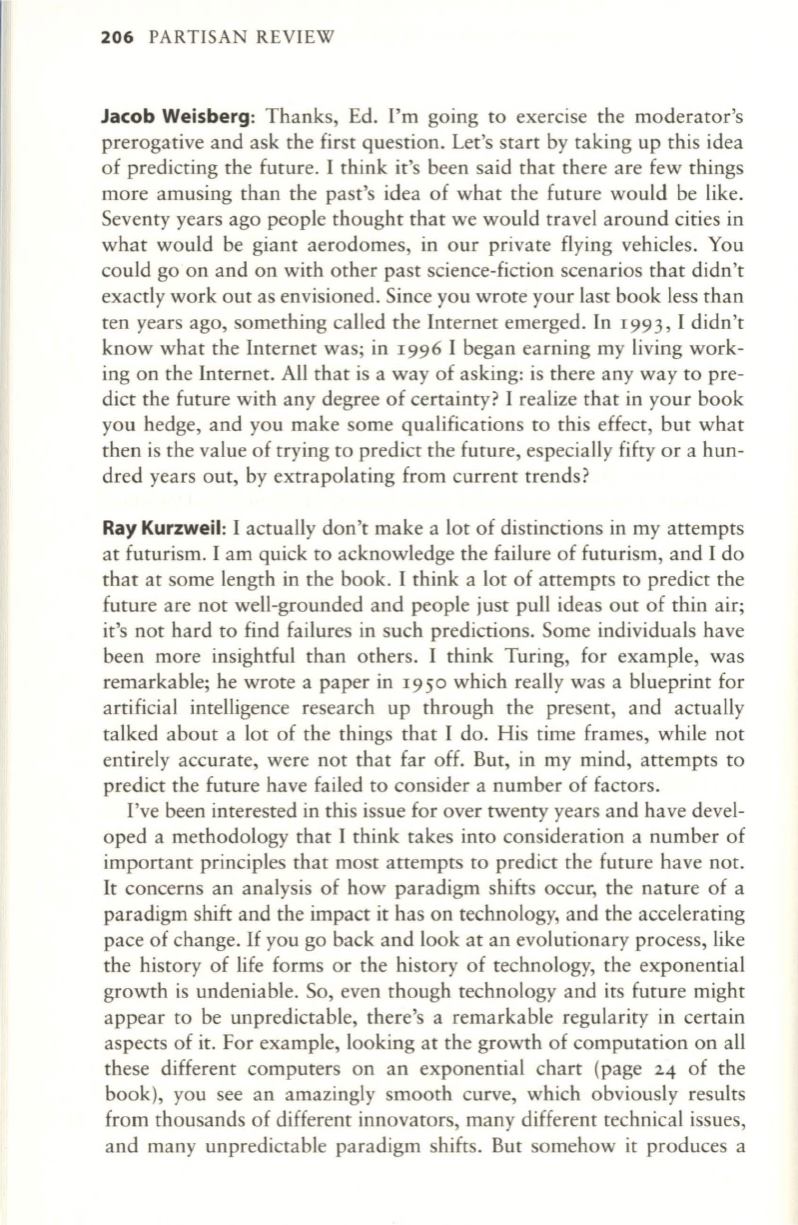
206
PARTISAN REVIEW
Jacob Weisberg:
Thanks, Ed. I'm going to exercise the moderator's
prerogative and ask the first question. Let's start by taking up this idea
of predicting the future. I think it's been said that there are few things
more amusing than the past's idea of what the future would be like.
Seventy years ago people thought that we would travel around cities in
what would be giant aerodomes, in our private flying vehicles. You
could go on and on with other past science-fiction scenarios that didn't
exactly work out as envisioned. Since you wrote your last book less than
ten years ago, something called the Internet emerged. In
1993,
I didn't
know what the Internet was; in
1996
I began earning my living work–
ing on the Internet. All that is a way of asking: is there any way to pre–
dict the future with any degree of certainty? I realize that in your book
you hedge, and you make some qualifications
to
this effect, but what
then is the value of trying to predict the future, especially fifty or a hun–
dred years out, by extrapolating from current trends?
Ray
Kurzweil :
I actually don't make a lot of distinctions in my attempts
at futurism. I am quick
to
acknowledge the failure of futurism, and I do
that at some length in the book. I think a lot of attempts to predict the
future are not well-grounded and people just pull ideas out of thin air;
it's not hard to find failures in such predictions. Some individuals have
been more insightful than others. I think Turing, for example, was
remarkable; he wrote a paper in
1950
which really was a blueprint for
artificial intelligence research up through the present, and actually
talked about a lot of the things that I do . His time frames, while not
entirely accurate, were not that far off. But, in my mind, attempts
to
predict the future have failed to consider a number of factors.
I've been interested in this issue for over twenty years and have devel–
oped a methodology that I think takes into consideration a number of
important principles that most attempts to predict the future have not.
It
concerns an analysis of how paradigm shifts occur, the nature of a
paradigm shift and the impact it has on technology, and the accelerating
pace of change.
If
you go back and look at an evolutionary process, like
the history of life forms or the history of technology, the exponential
growth is undeniable. So, even though technology and its future might
appear to be unpredictable, there's a remarkable regularity in certain
aspects of it. For example, looking at the growth of computation on all
these different computers on an exponential chart (page 24 of the
book), you see an amazingly smooth curve, which obviously results
from thousands of different innovators, many different technical issues,
and many unpredictable paradigm shifts. But somehow it produces a


